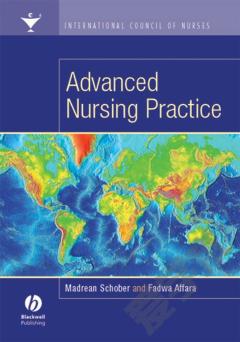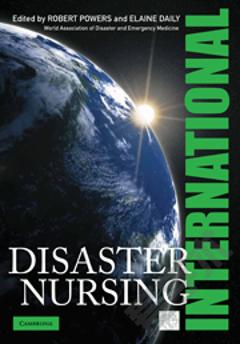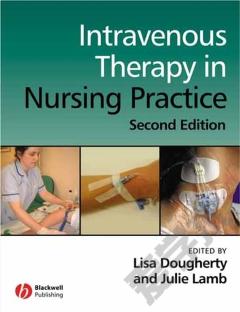International Council of Nurses —— Advanced Nursing Practice
----- 国际护士理事会:高级护理实践
Chapter 1: Introduction. Advanced Nursing Practice: A Growing Presence. Advanced Nursing Practice: Patterns of Development. Definition of Advanced Practice Nurse. Conclusion. References. Chapter 2: Nature of Practice. Introduction. Advanced Practice Nursing (APN) Characteristics. - ICN Official Position on APN Characteristics. - Country Illustrations. Labelling the Role. - Titling. - Title Protection. Scope of Practice. - What is Scope of Practice?. - What Influences Scope of Practice?. - Points to Consider When Defining Scope of Practice?. Core Competencies. Competency: The Basis for Education and Practice. - Creating a Competency Map. - Formulating Competency Statements. Advanced Tasks versus Advanced Roles. Controversial Practice Topics. - Prescriptive Authority. - Approaching APN Prescribing. - The Diagnosis Debate. - Approaching APN Diagnosing. - Hospital Privileges. - Approaching APN Hospital Privileges. Domains of Practice. Practice Settings. Conclusion. References. Chapter 3: Role and Practice Development. Introduction. Striving for the Ideal: Transitional Processes. Assessing the Opportunity and Need for Advanced Nursing Practice. Scanning the Environment. - Stakeholder Analysis. - SWOT Analysis. Introducing and Supporting Advanced Nursing Practice. Interfacing with Nurses, Physicians, Organisations and the Public. - Interface with Nursing. - Collegial Respect and Encouragement. - Strategies for Promoting Positive Nursing Interface. - Interface with Medicine. - Collaboration. - Strategies for Promoting Positive Medicine Interface. - Interface with Organisational Structures. - Strategies for Interfacing with Organisational Structures. - Interface with the Public. - Strategies for Interfacing with the Public. Socialisation: Role Support. - Strategies to Support New APNs. Ethical Dimensions of the Advanced Nursing Practice Role. Conclusion. References. Chapter 4: Regulation. Introduction. The Regulatory/Legislative Framework. Factors Influencing the Regulatory/Legislative Systems. Credentialing Advanced Nursing Practice. Components of the Credentialing Framework. - The Credentialee. - Credentialing mechanisms. - Credentialing the Advanced Practice Nurse. - Accrediting Educational institutions and Programmes. - Credentialer. - Purpose. - Powers. - Standards. - Processes. - Term or Duration. - Costs. - Effectiveness. - Mutual Recognition Agreements. Model for a Regulatory System for Advanced Nursing Practice. Exploring Your Regulatory Environment. - Preparation. - Forming an Overview of the Legislative/Regulatory Systems. - Understanding Regulatory and Legal Frameworks for Advanced Nursing Practice Advocating For Regulatory/legislative Change. - Document Analysis. - Advocacy Strategies. Conclusion. References. Chapter 5: Education for Advance Nursing Practice. Introduction. Characteristics of Advanced Nursing Practice Education. - The Case for Masters Level Education. - Debate Around Masters Level Education. - Country Variation in Education Philosophy, Approach and Development. Paths of Entry Into Programmes. Vignettes of Advanced Nursing Practice Educational Development. Assessment of Prior Experience and Bridging Mechanisms. Curriculum Development. - A Curriculum Framework to Promote Flexibility. - Curriculum: Course Distribution. Advanced Practice Clinical Experience. - Settings for Clinical Experience. - Preceptors and Quality of Clinical Placements. - Planning for the Precepting Experience. - Examples of APN Student Practicum in New Settings. Faculty Background and Preparation. Professional Development and Continuing Education. Educational Standards and Programme Accreditation. Conclusion. References. Chapter 6: Research. Theoretical Perspective of Advanced Nursing Practice. Exploring the Research Perspective. - Promoting Diverse and Analytical Research. - Research for Advocacy. Enhancing Knowledge and Skills in Research. - The Research Culture. - Research Competence. - Writing for Publication. - Starting to Write. - Writing. - Manuscript Preparation. Searching for Research Funding. International Classification for Nursing Practice (r) (ICNP): A Tool for Collaborative Nursing Research. An International Research Agenda for Advanced Nursing Practice. Conclusion. References. Chapter 7: Future Prospects and Critical Challenges for Advanced Nursing Practice. Introduction. Future Prospects. - Preparing a Health Care Workforce for the 21st Century. - Primary Health Care Services. - Chronic Conditions and Home Care. - Technology and Telehealth. - Nurse Entrepreneurs. Critical Challenges. - Critical Challenge 1: Integrating Advanced Practice Nurses Into Workforce Planning. - Critical Challenge 2: International Consensus Building Around Definitions, Scope of Practice, Core Competencies and Education. - Critical Challenge 3: Capacity Building to Strengthen Advanced Nursing Practice in Health Systems Internationally. - Critical Challenge 4: Defining the Gaps and Finding the Evidence. Conclusion. References. Appendix 1 Key Informant Survey on Advanced Nursing Practice (ANP) Self-Administered Questionnaire. Appendix 2 Scope of Practice Examples. Appendix 3 Strengthens, Weaknesses, Opportunities, Threats SWOT). Appendix 4 Principles to Guide Standards Development. Appendix 5 Samples of Course Descriptions in an Advanced Nursing Practice Curriculum. Appendix 6 Preceptor Guidelines, Student and Preceptor Evaluation Form. Appendix 7 Checklist for authors preparing to submit an article for publication. Appendix 8 Example of statements in an ICNP(r) Catalogue on Adherence to Treatment. Resources. Bibliography from Key Informants. Glossary
{{comment.content}}








 京公网安备 11010802027623号
京公网安备 11010802027623号